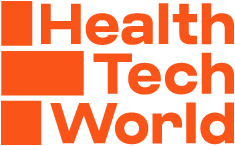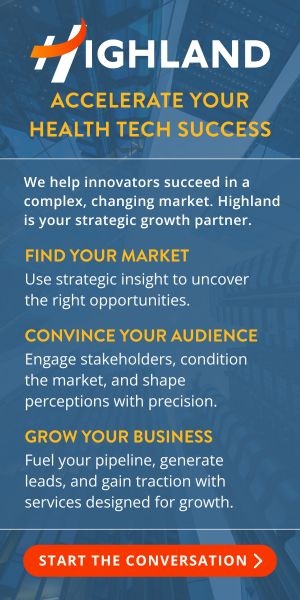
Health Tech World speaks to leaders in med tech to discuss some of the toughest challenges they have faced, barriers they have overcome, the current picture of the fundraising process, and what advice they have for entrepreneurs at the start of the development journey.
Bringing a health technology product or service to market is a long process that requires expertise and ample funding – and there are many challenges along the journey.
With an explosion in technologies such as machine learning and artificial intelligence, health tech products are rapidly advancing healthcare treatment options and services.
Here, health tech leaders discuss the journey and challenges in bringing a health tech product to market and making it successfully viable.
Vincent Sourdaine, vice president neuromodulation EMEA, Boston Scientific
From what you see now in the Health Tech field generally, what do you see as the biggest barriers preventing new innovations from entering patient / consumer usage?
When we look at a condition like chronic pain, which affects one in five adults in Europe today, the biggest barriers are underdiagnosis and undertreatment.
In a survey conducted by Boston Scientific in 2022 with 2,000 chronic pain patients in Europe, we found that one in four had to wait more than three years to receive a diagnosis – a period during which their condition can disrupt daily routines and severely impact their quality of life.
Additionally, we know that one in four Europeans with chronic pain report that their pain is not adequately managed with medication.
Unfortunately, access to pain clinics and pain specialists is inconsistent, and the availability of pain services can vary significantly. In this survey, the majority of patients were diagnosed either by a pain specialist or by a specialist with an interest in chronic pain.
This highlights the importance of better access and quicker referrals, as chronic pain – beyond its obvious physical discomfort – has a serious impact on the mental and emotional wellbeing of those affected.
In a further survey we conducted in 2024 with 3,000 chronic pain patients, the youngest respondents, aged 16 to 24, reported the highest impact on their overall wellbeing. Half of them stated that they experience anxiety caused by their condition multiple times a week. They also reported the highest rates of social isolation, difficulty concentrating, and low morale.

Chronic pain needs to be viewed holistically and recognised as a health issue that should be discussed openly and without stigma.
We must continue to raise awareness, both among physicians and patients.
Through the Institute for Advancing Science (IAS) and our EDUCARE programme, Boston Scientific is addressing the need for training and education with centres across the region. Only when all parties have a solid level of awareness can we foster meaningful conversations between patients, caregivers, and healthcare professionals – facilitating early recognition and diagnosis to ensure timely and effective pain management solutions.
With numerous treatment options now available, no one should have to endure chronic pain in silence. Pain is a deeply personal experience, and only a doctor can determine the appropriate treatment path. I urge anyone who has been living with the condition for more than 12 weeks to speak openly with their healthcare professional.
What notable trends are you seeing in this area which perhaps weren’t a factor five years ago?
One of our key focus areas for many years has been to go beyond the device level and address the treatment cycle more holistically – making procedures and follow-ups more efficient and precise without compromising patient outcomes.
With the onset of the Covid-19 pandemic, elective procedures came under immense pressure, and even today, hospitals and healthcare professionals continue to struggle with capacity bottlenecks. We constantly evaluate how we can better support them by enabling faster planning with minimal impact on resources and streamlining procedures.
For example, image-guided programming in Deep Brain Stimulation enhances workflow efficiency, while remote capabilities ensure customers receive support whenever and wherever needed – allowing them to allocate their capacities to more value-adding tasks.
Additionally, improving referral education is a critical element in helping more patients access treatment. Patient advocacy also plays a vital role in educating individuals about available treatments and managing expectations. While these areas have been integral to our efforts for some time, recent years have certainly acted as a catalyst for further advancements.
Kieran Rudrum, healthcare market analyst, Life Sciences Hub Wales
What is your message/advice for entrepreneurs at the start of the development journey?
Our message for entrepreneurs starting their development journey is clear: really get to know the health and care ecosystem your innovation is aiming to support. It’s not just about developing a great product, it’s also about solving a real-world problem that aligns with healthcare priorities.
Start by identifying the unmet health need your product addresses. Research similar products in development or on the market. What makes yours different? What value will it add, clinically, operationally, or economically?
At Life Sciences Hub Wales, we help innovators navigate market access from day one, supporting them to understand the regulatory, procurement, and reimbursement landscapes for their target regions. This includes guidance on approval pathways, pricing frameworks, budget cycles, and identifying key local decision makers.
Engage early with clinicians, nurses, patients and healthcare system managers. This helps to ensure your product solves a genuine problem and is designed with the end user in mind. solves genuine problems in healthcare. Co-creation with stakeholders from day one increases the chances of successful adoption further down the line.
Tap into the funding ecosystem. Speak to business support agencies like Business Wales, and explore sector-specific opportunities through UKRI and NIHR. for more focused funding opportunities. Start off by contacting business advisory services like Business Wales, that provide fully funded specialist advice and guidance to support SME businesses.
In the UK, early awareness of schemes such as the NHS Innovation Accelerator and Accelerated Access Collaborative can give you a huge advantage.
At Life Sciences Hub Wale, we can help signpost innovators to relevant partners, support services, and funding opportunities, so you don’t have to navigate the system alone.

From what you see now in the health tech field generally, what do you see as the biggest barriers preventing new innovations from entering patient / consumer usage?
One of the biggest challenges for innovators is gaining real market access, even after clinical validation and regulatory approval. You can have all the evidence in place, but if you don’t know how to enter the NHS ecosystem, adoption may stall.
Even when national approval is in place, adoption often depends on local procurement decisions. This can make scaling across the system more complex, but with the right partnerships and support, innovators can navigate this landscape more effectively
Another potential barrier is clinician engagement, which can also impact adoption.
Clinicians are often left out of the early innovation process, yet they’re essential for successful adoption. Without their buy-in, uptake is minimal, especially in the face of burnout and capacity pressures.
Funding is another major issue. SMEs often struggle to scale without significant investment. Many NHS pilots are short-term and grant-funded, with no clear pathway to commissioning. Some projects lack executive sponsorship, meaning there’s no champion to push them forward.
At Life Sciences Hub Wales can help tackle these barriers by acting as a dynamic interface between innovators and the system. Our team connects entrepreneurs with the right clinical partners, funding routes, and research collaborators. We also support collaborative bids and help projects maintain momentum after a pilot ends.
Jason Ward, co-founder and CEO, EQL
From your own organisation’s journey, what were the toughest challenges to overcome in bringing your product/service to market and what approaches/strategies did you employ to overcome them?
In the early days of any health tech journey, it’s very difficult to gather the evidence base to prove that not only is your product safe, but that it delivers positive health outcomes. One of the strategies we employed to overcome this was finding partners who were themselves on a journey of transformation. They were much more receptive to the idea of testing and innovating within problem pathways.
We also deliberately stayed away from doing free pilots. What tends to happen with free pilots is that nobody has any skin in the game, so no one is truly invested in making them a success. Occasionally, you get a clinical champion who is passionate about outcomes and wants the pilot to work, but if they’re your only stakeholder, you’re missing the commercial viability aspect.
From what you see now in the health tech field generally, what do you see as the biggest barriers preventing new innovations from entering patient/consumer usage?
One of the biggest ongoing barriers is still building that evidence base. There’s also an added challenge now that regulation has caught up, so staying on the right side of regulatory hurdles – whether it’s around medical device standards, governance, or cybersecurity – is critical.
Ensuring compliance with GDPR and keeping patient data safe are also much more scrutinised now than five to 10 years ago.
Additionally, the market is heavily saturated with potentially very good health tech solutions. While being a first mover helped us early on, it’s also kept us honest – we’ve had to stay ahead of the curve. It is harder for newer innovations, but if you can demonstrate ROI, better clinical pathways, and outcomes, there’s still space for new entrants.
What is your message to/advice for entrepreneurs at the start of the development journey?
The most important skill for any early entrepreneur is listening and questioning assumptions – clinical, commercial, and operational. Use your early stakeholders as soundboards. It’s a lot quicker and cheaper now to test your assumptions. You don’t need large upfront capital to validate ideas, do market research, or create early prototypes – even if those don’t go into patients’ hands immediately.
As a commercial founder, I always say: Who pays? When do they pay? How do you get paid? And does it deliver ROI for them? Many technical or clinical founders get caught up trying to build the perfect product for the perfect pathway. But that might not be the problem that gets funded. To make a product viable, first identify a widespread problem.
Then, understand the cost of that problem – whether that’s financial, capacity, efficiency, or outcomes-related.
Also, don’t hire expensive salespeople too early. You need to find your route to market first – then pull that lever. It might be that the NHS isn’t the first place that you should start selling to initially. Hiring sales too soon can lock you into a pathway that limits your options.
Once you find that traction, you can start doubling down.
Brian Wu, chief financial officer at Future Fertility
As the CFO of Future Fertility, I’ve had a front-row seat to the evolution of our company as we shift from R&D to international commercialisation. Our journey has been shaped by the unique opportunity to forge a new category for fertility insights in a highly regulated industry with generally accepted workflow and protocols.
What have been the toughest challenges in bringing your product to market?
One of our biggest hurdles was proving clinical validity and building trust in our flagship product, which leverages AI to provide non-invasive oocyte quality assessments. Unlike embryo grading or sperm analysis, there was no established framework for assessing eggs, so we are establishing a new standard of care.
To overcome this, we invested heavily in scientific research, peer-reviewed validation, and strategic collaborations with leading global clinics to ensure clinical credibility and regulatory acceptance. Building this foundation took time, but it has been critical in driving clinic adoption and growth.
What barriers do you currently see to innovation in health tech?
Across the health tech space, one of the biggest barriers remains the time lag between what is technologically feasible and clinical adoption.
Specifically for Future Fertility, even with a strong product that fills a gap in standard of care, gaining the confidence of both clinicians and embryologists who adhere tightly to existing workflows takes time and investments.
We were developing our AI models before the AI frenzy in the recent years, so it has been incredibly exciting to see the general awareness of AI pick-up and the IVF industry embracing AI. The work we have to do, as with other AI players in this space, is to demonstrate to clinicians and patients why AI solutions could drive meaningful benefits for them compared to the status quo.
Not only do they have to buy in, but we have to find ways to help integrate our tools and insights into their day-to-day clinical workflow and patient discussions.
What is your view of the current investment landscape?
From a fundraising standpoint, the current market environment does not promote an easy path to capital raising for health tech. With the IPO market slowing down in 2023, private company valuations decreased, and venture capital funding slowed down.
As such, many institutional investors now remain occupied with further supporting their existing portfolio companies. This means companies looking to raise fresh capital often have to reach a wider audience to raise funds.
The benchmarks for deal flow are also higher, given a tighter fiscal environment, so focusing on optimising resources and cash runway is now more important than ever to demonstrate prudent use of proceeds and to maximise existing shareholder value on a fundraise.
What is the role of AI in accelerating product development?
AI is not only central to our product, it has also accelerated how we develop and iterate. Our models improve with each dataset, and this feedback loop allows us to respond faster to clinical needs, develop new predictive insights (such as ploidy predictions), and personalise outputs for different market requirements.
Beyond the development of our AI models, new AI tools that are sold as “software-as-a-service” have greatly enhanced our capabilities to iterate on product and design ideas by allowing us to not only prototype quickly but translate new product features into code for our developers to review and deploy.
Companies that can leverage these new AI tools for software development will be able to accelerate their development timelines with lower costs.

Do you see any emerging trends in health tech?
Despite IVF becoming more mainstream in recent years, it is still a relatively new category of medicine.
Up until five years ago, patient-centered personalisation in reproductive medicine was a goal, but the primary focus was still on satisfying the demand for treatment.
Today, patients are demanding more clarity and transparency in their care. Tools that are accessible and provide individualised insights, especially in areas like fertility, where uncertainty can be emotionally taxing, are becoming a standard part of the care delivery plan.
What is your advice to entrepreneurs at the start of the development journey?
Move fast, but validate carefully. In health tech, speed matters, but credibility matters more. You need to be agile enough to test, learn, and adapt quickly, while ensuring that your innovation is built on sound clinical and regulatory foundations.
It’s tempting to chase rapid scale, which would increase your cost base very quickly, but clinical credibility and stakeholder trust are what will sustain long-term success. Surround yourself with medical, regulatory, and commercial advisors early on and then leverage AI tools as much as possible to prototype and streamline the development lifecycle so that you can learn about product market fit from these stakeholders quickly.
Lastly, do not lose sight of the patients, even if your products are going to be sold to clinicians or business owners. Often, the success of a health tech relies on both clinicians and patients understanding the benefits of the tech for adoption to grow.





